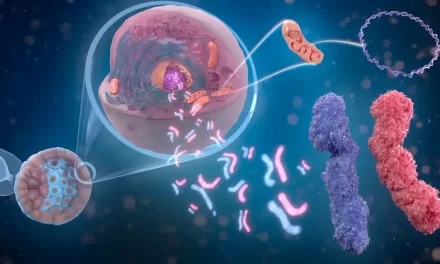A recent study from the Medical University of Vienna highlights a concerning link between adolescents’ exposure to self-harm images on social media and an increased urge to self-harm, particularly among those with a history of non-suicidal self-injurious behavior (NSSI). Published in JAMA Network Open, the study underscores the critical need for more effective prevention and intervention strategies to safeguard vulnerable youth.
The study, led by researchers from MedUni Vienna’s Department of Child and Adolescent Psychiatry, focused on adolescents aged 14 to 18, comparing those with and without a history of NSSI. By using advanced eye-tracking technology, the researchers analyzed the participants’ gaze direction and how long they fixated on various images, including those depicting self-harm. They also utilized a dot-probe task to measure how quickly adolescents responded to NSSI images compared to neutral images.
The results revealed a troubling pattern: adolescents with a history of NSSI demonstrated significantly more attention to and a stronger emotional response to self-harm images compared to neutral content. Their gaze lingered longer on the self-harm images, and they had difficulty diverting their focus away from them. This heightened attention appears to amplify the urge to engage in self-harm behaviors, further compounding the risks for these adolescents.
Interestingly, the study found that the reaction was tied specifically to visual content. Adolescents with NSSI histories did not show the same heightened response to textual content related to self-harm. This suggests that visual imagery may play a more powerful role in triggering the urge to self-harm than written words.
“Our study shows that visual content on social media can contribute significantly to the urge to self-harm, especially in adolescents who are already at risk,” said lead author Andreas Goreis. “This finding points to the need for a more focused approach in addressing the impact of social media images on vulnerable youth.”
The study also examined physiological reactions, such as heart rate and skin conductance, finding no significant differences between the groups when exposed to the images. However, the psychological effects were notable, as the adolescents with NSSI histories appeared more distressed by the images, indicating that emotional responses to self-harm content may be more profound than physiological ones.
Study leader Oswald Kothgassner emphasized the importance of preparing adolescents to deal with such content: “These findings highlight the necessity of equipping young people with the tools to manage emotional regulation and distance themselves from distressing stimuli they may encounter on social media.”
The study’s implications are far-reaching, urging mental health professionals to be vigilant about the potential triggers that self-harm images pose to adolescents, especially those already at risk. The researchers advocate for educational programs focused on emotional regulation skills and strategies to help young people recognize and manage distressing media content.
In conclusion, the study offers valuable insights into the psychological impact of social media on vulnerable adolescents. It suggests that better support systems and preventive strategies are essential to mitigate the potential harms of visual self-harm content on platforms used by young people.
For more details, see Attentional Biases and Nonsuicidal Self-Injury Urges in Adolescents by Andreas Goreis et al. in JAMA Network Open (2024). DOI: 10.1001/jamanetworkopen.2024.22892.











